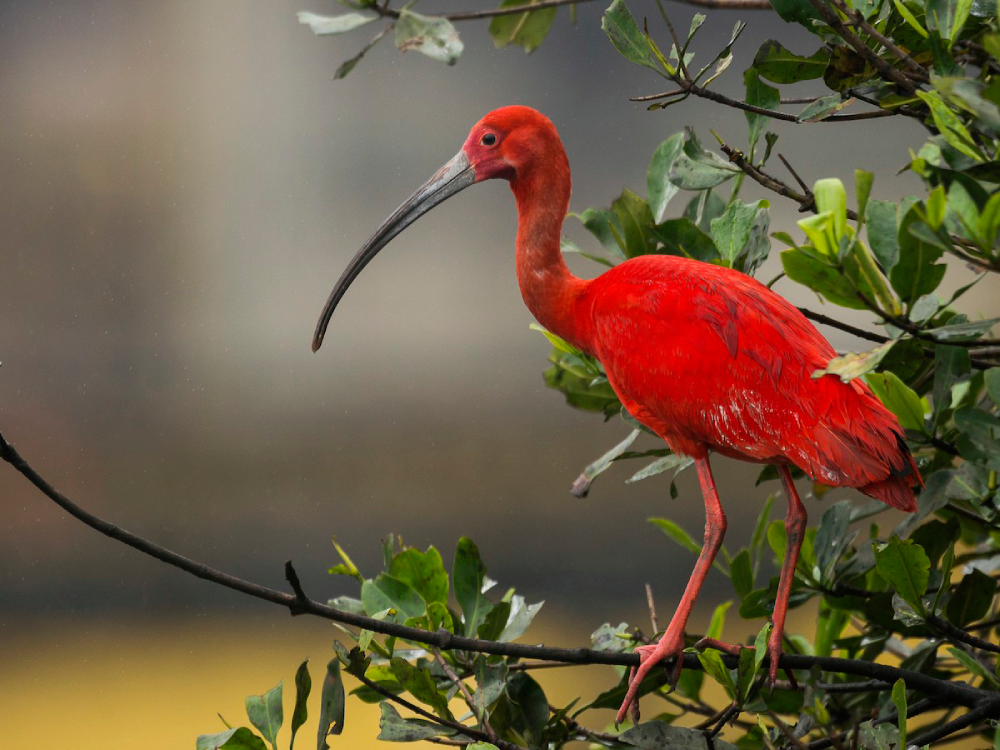In the vast and diverse realm of avifauna, few creatures captivate the imagination quite like the Scarlet Ibis. With its stunning scarlet plumage, this bird stands out as a beacon of beauty against the backdrop of its lush habitat. But beyond its striking appearance, the Scarlet Ibis holds a deeper significance, embodying themes of fragility, resilience, and the interconnectedness of life.
Appearance and Habitat
Native to the tropical regions of South America and the Caribbean, the Scarlet Ibis (Eudocimus ruber) is popular for its vibrant crimson feathers, which range from deep scarlet to bright orange. This vivid coloration is the result of its diet, which is rich in carotenoid pigments found in the crustaceans and other aquatic creatures it consumes.
These birds typically inhabit mangrove swamps, wetlands, and coastal regions, where they can forage for food in the shallow waters. Their long, curved bills are perfectly adapted for probing the mud and silt in search of prey, while their slender legs allow them to wade through marshy terrain with ease.

Symbolism and Mythology
In many cultures, the Scarlet Ibis holds symbolic significance. In ancient Egyptian mythology, it has associations with the god Thoth, who often had the head of an ibis. The bird’s striking appearance and graceful demeanor have also made it a symbol of beauty and elegance in various indigenous cultures throughout its range.
In some traditions, the Scarlet Ibis brings good luck or serve as a messenger from the spirit world. Conversely, its bright red plumage has also led to associations with blood and death in certain folklore and superstitions.
Behavior and Adaptations
Despite its stunning appearance, the Scarlet Ibis faces numerous challenges in its natural environment. Habitat loss, pollution, and climate change threaten the delicate ecosystems upon which it depends for survival. Additionally, the bird’s striking coloration, while beautiful, can also make it a target for predators.
To mitigate these risks, Scarlet Ibises have developed several adaptations. They often congregate in large flocks, which provide safety in numbers and increase their chances of survival. Their keen eyesight and agility help them evade predators, while their specialized bill enables them to extract nourishment from their surroundings with precision.
Conservation Status
Despite these adaptations, the Scarlet Ibis remains vulnerable to human activities that disrupt its habitat and food sources. In some areas, hunting and poaching have decimated local populations, while pollution and habitat destruction pose ongoing threats to their survival.
Efforts to conserve the Scarlet Ibis and its habitat are underway in many regions, including the establishment of protected areas, habitat restoration projects, and community-based conservation initiatives. Public awareness campaigns and educational programs also play a crucial role in raising awareness about the importance of preserving these magnificent birds and their ecosystems.
The Scarlet Ibis in Literature and Art
The Scarlet Ibis has inspired countless works of literature, art, and music, serving as a symbol of beauty, resilience, and the interconnectedness of all living things. Perhaps most famously, it features prominently in the short story “The Scarlet Ibis” by James Hurst, where it serves as a powerful metaphor for the fragility of life and the bond between siblings.
In visual art, the Scarlet Ibis has been depicted in paintings, sculptures, and other forms of artistic expression, often symbolizing themes of passion, transformation, and the enduring power of nature. Its vivid plumage and graceful form make it a favorite subject among wildlife artists and nature enthusiasts alike.
Conclusion
In the grand tapestry of the natural world, few creatures can rival the Scarlet Ibis in terms of sheer beauty and symbolic significance. From its stunning scarlet plumage to its graceful demeanor and profound cultural resonance, this magnificent bird serves as a poignant reminder of the delicate balance of life on Earth.
As we strive to protect and preserve our planet’s rich biodiversity, let us draw inspiration from the Scarlet Ibis and work together to ensure a brighter future for all living things. In doing so, we honor not only the beauty and resilience of this remarkable bird but also the interconnected web of life that sustains us all.









